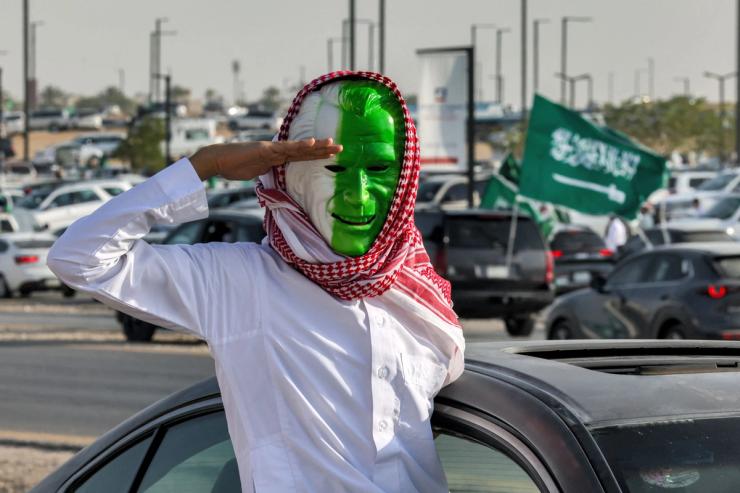Sept. 23 is Saudi National Day.
Officially marking the unification of the country under the rule of King Abdulaziz in 1932, the holiday is now the party of the year: Teenagers with faces painted green — some with blow up green sumo-wrestler suits — and mountains of silly string take over the streets. There will be gridlock, and dozens of arrests. If you haven’t bought your green masks and Saudi football jerseys, it’s already too late. They’re sold out.
The mirth masks a deeper, remarkable transformation. Two decades ago, there were only two official holidays on the Saudi calendar — Eid Al Fitr and Eid Al Adha — and anything else was a “Bida’a,” a religious taboo. Nationalism is a more recent project, and as Camilla Wright wrote for Semafor, the new Saudi version “imbues the country with a history that glosses over the past few decades,” making fun — fireworks, light shows, general hysteria — and pride at the core of the celebrations.


